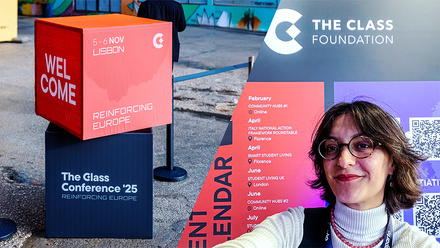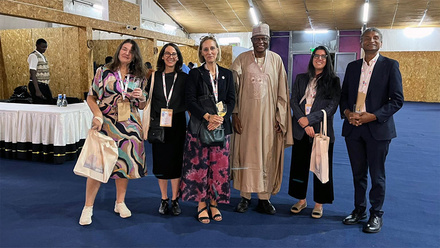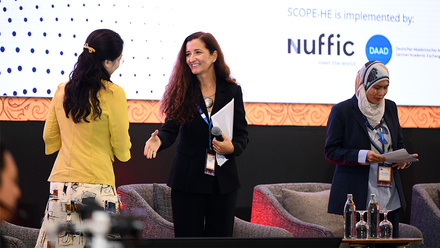Mobility in the balance

The Summer 2021 issue of Forum takes a fresh look at the mobility of staff and students in a world where opportunities to cross national borders are still heavily restricted. In compiling this issue, we were keen to explore whether alternatives to physical mobility are now gaining new ground, and what this might mean for the status of physical mobility. Conscious that student participation levels in outbound mobility were still low prior to the COVID-19 pandemic, we sought contributions that assessed the opportunities and challenges afforded by the current moment of transition. While the COVID-19 pandemic has in many ways left the world of physical mobility in suspended animation, new opportunities have emerged and may well be leading to a paradigm shift in approaches to internationalisation.
I am indebted to fellow members of the EAIE Publications Committee who joined me in reviewing submissions for this edition – Dr Jos Beelen and Ragnhild Solvi Berg – and am delighted that we have been able to include contributions from a range of European countries and further afield, not to mention from some of the key actors in European mobility, including the European Commission, Council of Europe, European University Association and Erasmus Student Network.
Does mobility still matter?
Authored by Tiina Piipponen from the EAIE Expert Community Mobility Advising, the opening article in this issue argues passionately that mobility still matters, and points to the need for increased staff professionalism in the face of an ever more complex external environment. Presenting an alternative view, Joyce Gelling from the Netherlands highlights the impact on institutions of immobile students, noting that new and alternative modes of mobility have required a range of adaptations to local systems and processes.
Voluntary vs involuntary mobility
While we generally consider staff and student mobility to be optional, Sjur Bergan (Head of the Education Department at the Council of Europe) looks instead at forced and involuntary mobility, taking the example of refugees and other displaced people and outlining the merits of European Qualifications Passport for Refugees initiative.
Returning to voluntary mobility, Matt Greig & Björn Nyström from Sweden argue that the case for physical mobility is now clearer and stronger than before in the face of online fatigue and corona angst. Drawing from their experience as members of the Erasmus Student Network, Tajana Mohnacki, Wim Gabriels and Kaspars Ābelnīca nevertheless advocate for a student-centred approach to the development of new mobility programmes and the educational methodologies which underpin them. Meanwhile, Nawazish Azim & Syed Rahamat Ali from King Abdullah University of Science and Technology in Saudi Arabia outline the pros and cons of building digital community spaces via virtual exchange, and emphasise the importance of maintaining fluid and permeable transitions between physical and virtual mobility.
Study mobility
The interviewee for this issue is a student, Sorcha Leveque, a dual Irish/French citizen who has been studying in the UK and who has seen her mobility programmes interrupted twice for different reasons. Sorcha’s reflections on her experience are fascinating, and I’m delighted that we could include a student testimonial in this issue.
Access to outbound mobility has been a key area of focus for institutions and mobility professionals for many years. As such, articles from Ainslie Moore and Brett Berquist (New Zealand) and Hugo Buitrago Carvajal, Nathália Cristina do Rosário & Jessica Schueller (Brazil) will be of particular interest for those seeking to enable greater access, whether through virtual learning abroad, through other local opportunities or via transnational education. Maximilian Köster from Germany then usefully questions whether institutions have the appropriate support structures in place to facilitate new forms of virtual mobility.
New opportunities have emerged and may well be leading to a paradigm shift in approaches to internationalisation.
A cluster of articles then looks at the particular situation of study mobility within Europe. Ana Beaven, Francesca Helm & Sara Pittarello from Italy outline different models of virtual exchange, drawing on the European Commission’s recent Erasmus+ Virtual Exchange initiative. Kyriaki Rousou & Nadia Manzoni from the Directorate-General for Education, Youth, Sport and Culture in the European Commission then highlight the evolution of the new Erasmus+ programme, with its horizontal priorities of inclusion, digitalisation, environmental sustainability and active citizenship. Micheal Gaebel from the European University Association provides a timely status update on study mobility in Europe and looks forward to the next decade.
Closing out this issue, Randall Martin from the British Columbia Council for International Education in Canada invites us to reflect on new beginnings and the current opportunity to redesign mobility for a new world.






